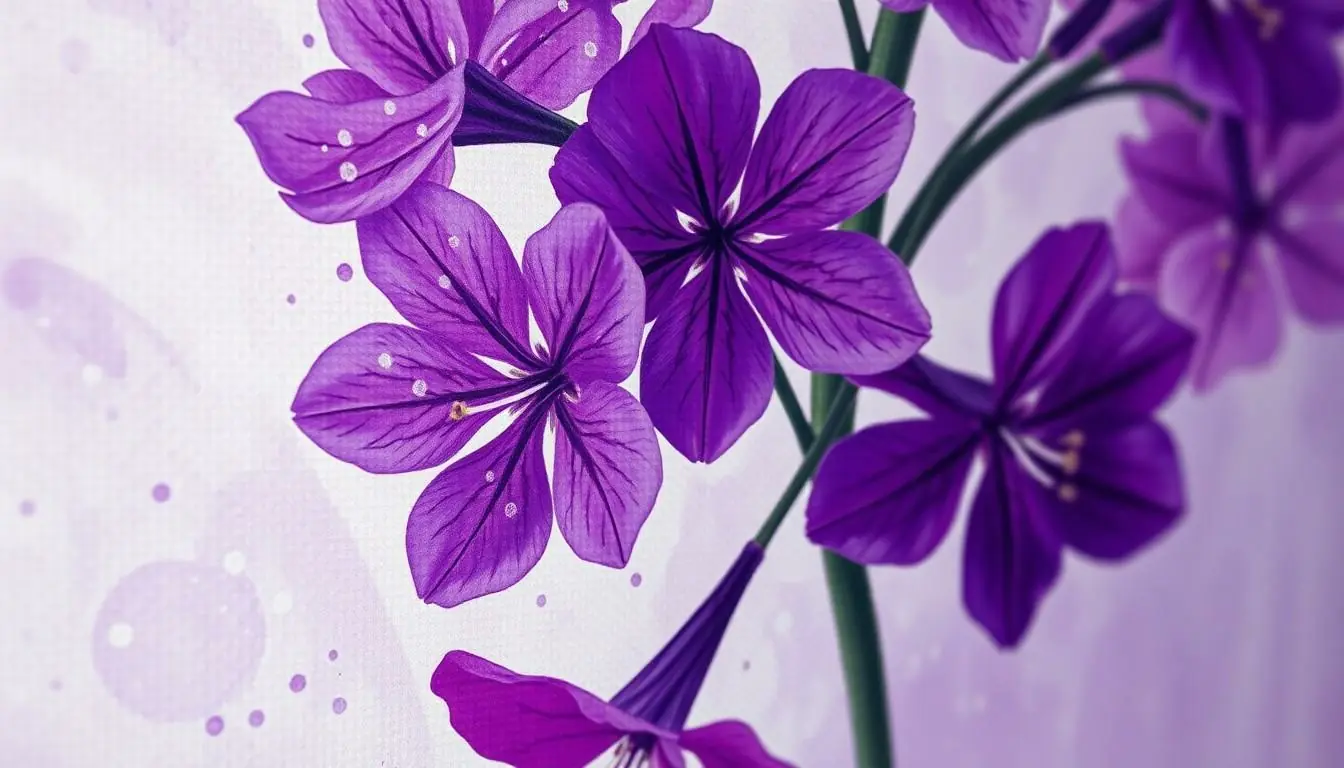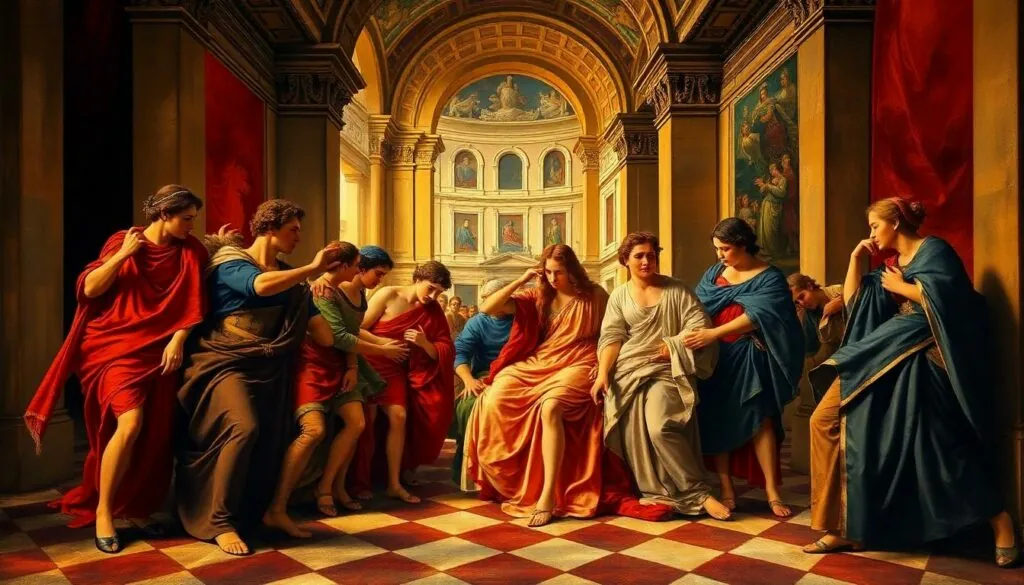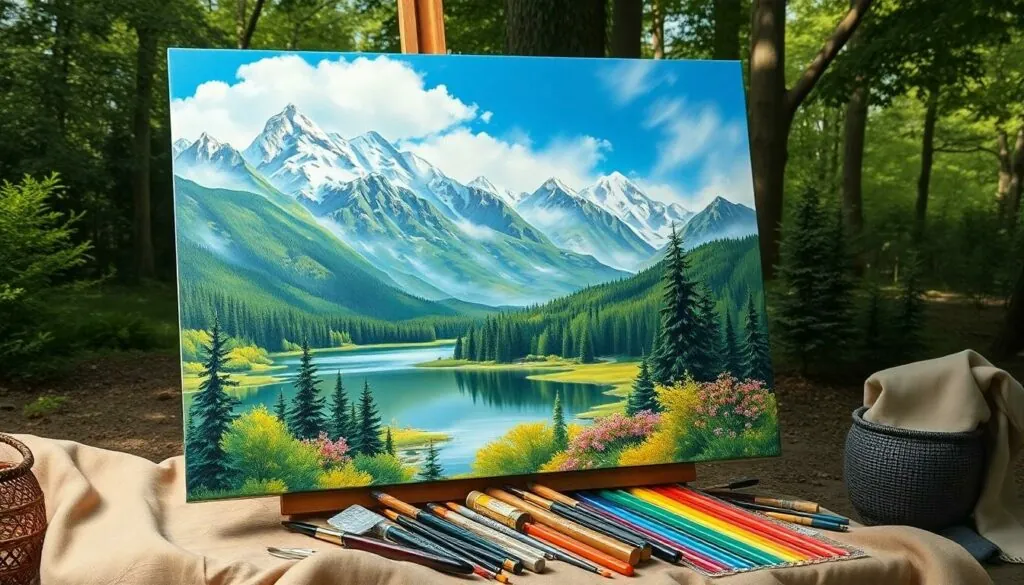Purple flower painting isn’t just a splash of color on canvas; it’s a journey into a world where creativity blooms and imagination runs wild. Imagine a vibrant lavender field stretching as far as the eye can see, each brushstroke capturing the essence of nature’s beauty. Whether you’re an art aficionado or someone just looking to add a pop of color to your living room, purple flowers can transform any space into a sanctuary of serenity.
Table of Contents
ToggleOverview of Purple Flower Painting
Purple flower painting serves as a vivid celebration of nature’s beauty. Artists often choose purple flowers for their rich symbolism and emotional resonance. Lilacs, violets, and irises stand out as popular subjects due to their vibrant colors and unique shapes.
Bringing these flowers to life on canvas requires a keen eye for detail and a mastery of technique. Various painting styles, such as impressionism and realism, highlight the nuances of texture and light. Techniques like layering and glazing enhance depth, allowing viewers to immerse themselves in the artwork.
The significance of purple shades isn’t just aesthetic. Purple represents creativity, spirituality, and calmness, making these paintings ideal for both personal and public spaces. Many individuals turn to purple flower paintings to promote serenity in homes and offices.
Beyond decor, these paintings often connect people with nature, offering a moment of peace in bustling environments. Artists express their interpretations through carefully chosen palettes and brushwork, each piece telling its own story. The combination of color, subject matter, and technique makes purple flower paintings appealing to collectors and art enthusiasts alike.
Purchasing purple flower art supports artists while enhancing one’s living space. Galleries and online platforms showcase diverse styles and interpretations, allowing art lovers to find pieces that resonate with their personal aesthetic. Hence, these paintings serve not only as decor but as meaningful connections to nature and creativity.
Techniques Used in Purple Flower Painting

Artists employ various techniques to capture the beauty of purple flowers on canvas. Understanding these methods can enhance one’s appreciation of the artwork.
Brushwork Techniques
Distinct brushwork techniques play a crucial role in purple flower painting. Artists often use short, quick strokes to depict the delicate petals of flowers like violets and irises. Long, sweeping strokes may mimic the gentle curves of lavender fields. Soft blending is common for creating transitions between shades, emphasizing the flowers’ natural beauty. Additionally, stippling adds texture to the artwork, elevating the visual experience. Each stroke tells a story, highlighting the artist’s unique style while bringing the subject to life.
Color Mixing and Application
Color mixing and application strategies significantly influence the final outcome of purple flower paintings. Artists often blend shades of violet, lavender, and plum to achieve a vibrant palette. Layering colors allows for depth and richness, enhancing the overall composition. Techniques like glazing create luminosity, making the flowers appear more lifelike. Applying contrasting colors strategically enhances visual appeal, drawing the viewer’s eye. Each application technique contributes to the emotional impact of the artwork while celebrating the essence of purple flowers.
Styles of Purple Flower Painting
Purple flower painting encompasses various styles that highlight the unique beauty of blooms. Two notable styles include impressionism and abstract art.
Impressionism
Impressionism captures the essence of purple flowers through loose brushstrokes and vibrant colors. Artists prioritize light and movement to convey the fleeting quality of these natural wonders. Lavender fields depicted in this style often evoke feelings of tranquility. Techniques like color blending create a sense of depth and dimension, inviting viewers to immerse themselves in the scene. Artists frequently use short, quick strokes for delicate petals, allowing the viewer to sense the flowers’ softness. Iconic impressionist painters like Claude Monet often showcased lilacs and irises, emphasizing their colors and character through dynamic compositions.
Abstract
Abstract painting offers a different perspective on purple flowers, stripping away literal representations. Artists highlight emotional responses through shapes, colors, and lines rather than realism. Vibrant purples can symbolize creativity and spirituality, evoking a range of interpretations. Geometric forms might represent flowers in a simplified manner, allowing viewers to engage with the artwork on a deeper level. Artists, like Wassily Kandinsky, often use color contrast to stimulate emotions and capture attention. The allure of abstract purple flower paintings lies in their ability to convey feelings and stimulate imagination, making them ideal for contemporary spaces.
Famous Purple Flower Paintings
Many renowned painters have celebrated purple flowers through their artwork. These iconic pieces capture the essence and emotional weight of flowers like lilacs, irises, and violets.
Claude Monet’s “Lilacs in a Window” exemplifies impressionism. The piece portrays lilacs blooming in a window, showcasing vibrant purples and soft brushwork. This painting emphasizes the interplay of light and color, inviting viewers into a tranquil atmosphere.
Vincent van Gogh’s “Irises” stands out with its bold strokes. This artwork features irises in a swirling background of deep blues and greens, allowing the purple flowers to pop dramatically. Van Gogh’s unique technique evokes profound emotion, creating an immersive experience.
Georgia O’Keeffe’s “Purple Flower” reimagines flowers in a more abstract manner. The enlarged portrayal emphasizes the flower’s curves and shapes, allowing viewers to explore its beauty from a fresh perspective. O’Keeffe focuses on color and form, highlighting the spirituality often associated with purple flowers.
In addition, Pierre-Auguste Renoir’s “Lilac Blossoms” showcases soft colors and delicate details. This painting illustrates a harmonious blend of lavender hues, capturing a moment of natural beauty. Renoir’s talent for presenting light enhances the floral subjects’ essence.
Lastly, contemporary artists continue to explore purple flowers. They use various techniques and styles, pushing the boundaries of traditional representations. This ongoing appreciation for purple flower painting reflects its lasting appeal and significance in the art world.
Purple flower painting transcends mere decoration. It immerses viewers in a world of creativity and emotional depth. Each piece serves as a reminder of nature’s beauty and the tranquility it can bring into everyday life. Artists continue to explore various techniques and styles, ensuring that the allure of purple flowers remains vibrant and relevant.
Whether through impressionism or abstract interpretations, these artworks connect people with their surroundings and evoke feelings of calmness and inspiration. By choosing to incorporate purple flower paintings into their spaces, individuals not only support artists but also invite a sense of serenity and creativity into their homes. The lasting impact of these paintings is evident in both personal collections and public galleries, showcasing their timeless appeal.



